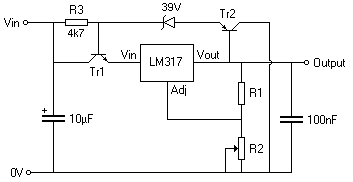The LM317 has no upper limit to the maximum output voltage. It's a floating regulator, so all that's important is the difference between the input and output voltage, which mustn't exceed 40V for the standard part, or 40V for the HV variant. The main issue with higher input, than the LM317s maximum rating, when the over-temperature/current protection kicks-in, is the full supply voltage will appear across the regulator.
Another transistor can be added in series with the LM317, to drop most of the voltage and ensure the maximum voltage rating is not exceeded.

Note that the above circuit drops about 40V across the LM317, which is too much. The zener should be changed to a <30V part to drop more voltage across the transistor.